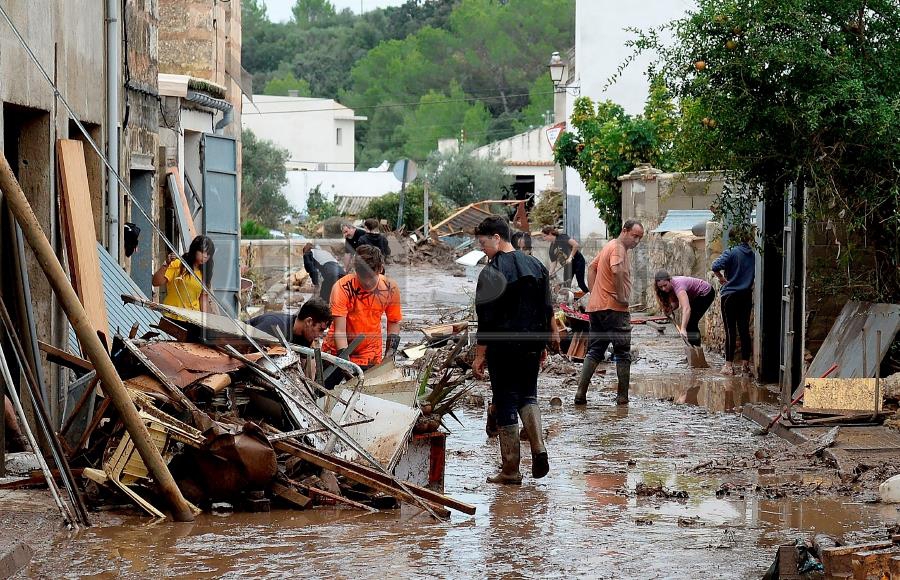ALMOST every day we hear news about catastrophic flooding or drought somewhere in the world. And many nations and regions are on track for even more extreme water problems within a generation.
This is the warning that is sounded in the latest Intergovernmental Panel on Climate Change (IPCC) report.
Extreme floods and droughts have a profound impact on development, particularly in less developed parts of the world. About 140 million people are affected — displaced by the loss of incomes or homes — and close to 10,000 people worldwide die annually from these twin calamities. Global annual economic losses from floods and droughts exceeds US$40 billion (RM166.14 billion); add in damages from storms like America’s recent Hurricanes Florence and Michael, and the cost balloons.
Flood and drought economic losses — comparable in dollar terms to all global development aid — affect the water, food and energy security of nations. To cope with these problems, massive investments continue to be made in large reservoirs.
However, in certain regions it has started to make little engineering sense to build additional “grey (concrete and steel) infrastructure” due to a lack of suitable sites and, or, rapid evaporation. In others, ageing grey infrastructure may no longer provide the originally envisioned benefits because hydrological parameters and patterns are changing.
The appropriate response is to recognise the benefits of “green (natural ecosystems) infrastructure” and to design grey and green infrastructure in tandem to maximise benefits for the people, nature and the economy.
“Nature-based solutions” were the theme of this year’s UN World Water Development Report. Nature-based solutions include:
SOIL moisture retention systems, and groundwater recharge to enhance water availability;
NATURAL and constructed wetlands and riparian buffer strips to improve water quality; and,
FLOODPLAIN restoration to reduce risks associated with water-related disasters and climate change.
The role of green water storage infrastructure is particularly important.
The enormous potential of such approaches are only now being fully understood but its clear that green infrastructure can directly improve the performance of grey infrastructure for disaster risk reduction.
Indeed, large-scale managed aquifer recharge efforts can, in certain conditions, alleviate both flood and drought risks in the same river basin.
Recent studies suggest that agricultural income could be boosted by about US$200 million per year in a river basin greater than 150,000 km2 in area, with only 200 km2 of land converted for accelerated groundwater recharge in wetter years. Not only is additional water made available to farmers in drier periods, downstream flooding costs can also be eliminated. And the capital investment required could be recouped in a decade or less.
Such sustainable, cost-effective and scalable solutions may be relevant in developing countries, where water-related disaster vulnerability has risen to unprecedented levels and the impacts of climate change are most acutely felt.
Nature-based solutions are not feasible everywhere and, where they would help, they alone are not the silver bullet for water risks and variability — they cannot be counted on to replace or achieve the full risk reduction effect of grey infrastructure.
Nevertheless, nature-based solutions need to be considered in all water management planning and practiced where possible. Especially at river basin and regional scales, management planning should consider a range of surface and subsurface storage options, not just large concrete dams. The challenges include:
AN overwhelming dominance of traditional grey infrastructure thinking and practices (and associated inertia against nature-based solutions);
THE need for more quantitative data on the effects of nature-based solutions;
A LACK of understanding of how to integrate natural and built infrastructure for managing water extremes;
OVERALL lack of capacity to implement nature-based solutions;
and,
A PREDOMINANTLY reactive rather than proactive approach to water-related disaster management.
Nature-based solutions have much greater potential if included in risk reduction planning and adopted before disaster strikes.
These challenges will take time to overcome, but there is hope. The UN General Assembly has designated Oct 13 as the International Day for Disaster Reduction, which this year has taken the theme of reducing economic losses from disasters.
The theme corresponds to a target of the Sendai Framework for Disaster Risk Reduction 2015-2030, which underlines the need to shift from post-disaster planning and recovery to proactive disaster risk reduction and calls for strategies with a range of ecosystem-based solutions.
Some 25 targets within 10 of the 17 Sustainable Development Goals the of UN Agenda 2030 either explicitly or implicitly address various aspects of water-related disaster management.
The obvious synergies between all these targets will increasingly strengthen if nature-based solutions are seen as a supporting concept to all of them. IPS
Vladimir Smakhtin is director of UN University Institute for Water, Environment and Health, which is supported by the Canadian government and hosted at McMaster University
